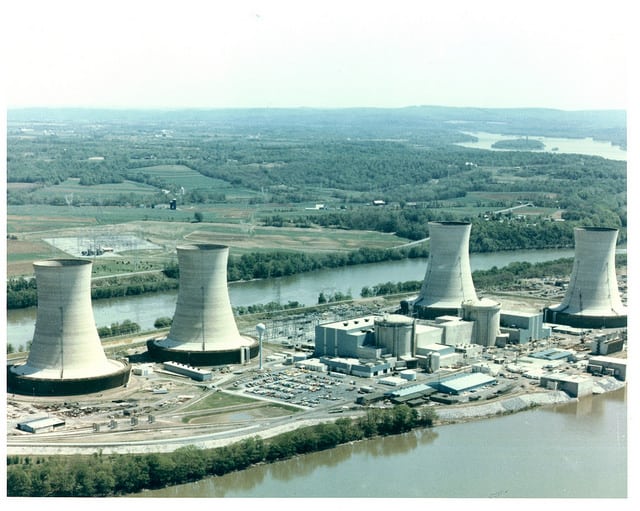
When completed, the U.S. Nuclear Regulatory Commission rulemaking on decommissioning nuclear reactors could save millions of dollars over six decades, according to a new analysis of the costs and benefits of the process.
As it approaches the end of the process started in 2015, agency staff plans to submit a draft of new proposed rules to the commission in May. After receiving input from the commissioners a final rule should be published in early 2020.
The intent is to establish regulations in a number of operational areas for nuclear power plants that are transitioning to decommissioning. This would free nuclear power operators from needing exemptions to regulations or amendments to their existing licenses for plants that pose a lower radiological danger as they close and proceed through the cleanup process.
“The NRC’s goals in amending these regulations would be to provide for an efficient decommissioning process; reduce the need for exemptions from existing regulations; address other decommissioning issues deemed relevant by the NRC staff; and support the principles of good regulation, including openness, clarity, and reliability,” the agency said in a Federal Register notice published Wednesday announcing the new regulatory analysis.
The 188-page analysis is intended to provide economic impact data in support of the regulatory basis for the rulemaking, which the NRC issued in November. In the earlier document, NRC staff determined there was “justification” for issuing new regulations in eight areas of nuclear power plant operations: emergency preparedness, physical security, cybersecurity, drug and alcohol testing, training requirements for certified fuel handlers, decommissioning trust funds, financial protection requirements and indemnity agreements, and application of the backfit rule. Staff is also recommending clarification of requirements for spent fuel management; records retention; and transportation investigation, tracing, and reporting.
The preferred staff alternatives laid out in the new analysis are projected to create savings in eight of those 11 areas, including $6.15 million for emergency preparedness and $5.81 million for fitness for duty – drugs and alcohol. The other costs and benefits run into the tens or hundreds of thousands of dollars, in 2017 dollars based on a 7 percent net present value.
“The total net benefits/costs … include both one-time and recurring benefits/costs over a 60-year time period starting in 2020, the year in which the rulemaking is anticipated to go into effect,” NRC spokesman Scott Burnell said by email. “These benefits/costs account for the NRC, the industry, state/local governments and the general public.”
Alongside the anticipated financial benefits, the recommended alternatives in the rulemaking would sustain “adequate protection” of human health and safety, along with protection of the nuclear facilities, according to the Federal Register notice. “These alternatives would enable the NRC to better maintain and administer regulatory activities over the decommissioning process and ensure that the requirements for decommissioning power reactors are clear and appropriate,” the agency added.
For emergency preparedness, the staff preferred alternative is a “graded approach” for reducing requirements in line with the lowered radiological risk as a plant’s spent fuel is removed from the reactor, cools in the spent fuel pool, is moved into dry storage, and finally is shipped off-site.
As a facility advances through these four stages in management of its spent fuel, it would be allowed at each step to relax requirements in operational areas including staffing and emergency response, emergency classification levels and emergency action levels, annual dissemination of public information, drill and exercise program, and hostile action requirements.
In the preferred alternative for the fitness for duty [FFD] — drugs and alcohol rulemaking, the NRC would fix an inconsistency in existing federal regulations in which one rule does not apply to plants no longer authorized to operate a power reactor while another continues to apply to facilities even as they go through decommissioning.
“These changes would ensure that FFD program elements that are necessary to maintain reasonable assurance that individuals at reactor sites, particularly at decommissioning sites, remain trustworthy and reliable are implemented consistently throughout the industry,” according to the regulatory analysis. “These changes will also reduce the number of individuals that are subjected to the FFD elements that satisfy the [insider mitigation program] requirements over the decommissioning time frame.”
The insider mitigation program is intended to prevent an act of sabotage from within a nuclear facility.
A number of nuclear plants have closed permanently in recent years, or announced their pending shutdown, in the face of economic challenges including low natural gas prices. Some states have stepped in with financial assistance to keep their plants viable, but the closure trend continues – just last week, Exelon announced it would retire its Oyster Creek plant in New Jersey in October, more than a year earlier than previously planned.
In the regulatory analysis, the NRC noted that 79 licensing actions, including exemptions and amendments, and 16 public meetings were needed for four nuclear power plants that closed in 2013 and 2014: Crystal River in Florida, San Onofre in California, Vermont Yankee, and Kewaunee in Wisconsin.